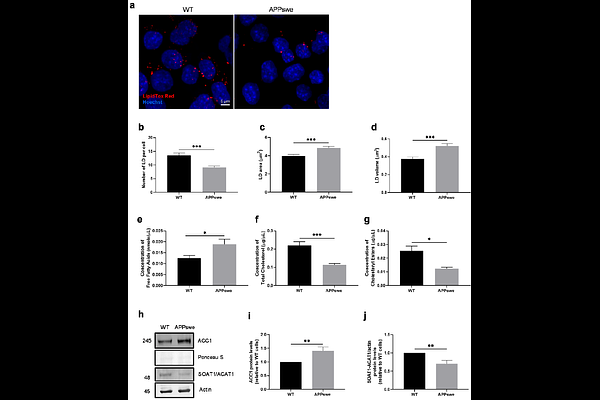Lipid droplet dysmetabolism affects cell homeostasis in an in vitro model of Alzheimer disease

Lipid droplet dysmetabolism affects cell homeostasis in an in vitro model of Alzheimer disease
Fernandes, T.; Caldeira, M.; Melo, T.; Neves, B. B.; Carvalho, C.; Resende, R.; Filadi, R.; Pizzo, P.; Domingues, M. R.; Pereira, C. F.; Moreira, P. I.
AbstractLipid droplets (LD) are dynamic organelles involved in neutral lipid storage, energy homeostasis, and can prevent lipotoxicity and oxidative distress. LD dysmetabolism has been considered a pathological hallmark in neurodegenerative disorders, including Alzheimer disease (AD). In this study, we investigated the alterations in LD metabolism and their impact on mitochondria-associated membranes (MAM) in an in vitro model of AD, namely the mouse neuroblastoma cell (N2A) line overexpressing the amyloid precursor protein with the familial Swedish mutation (APPswe). In APPswe cells, we found depletion of LD associated with an accumulation of free fatty acids that can be related with the observed LD degradation by chaperone-mediated autophagy. In these cells we also found decreased levels of seipin, which might contribute to triacylglycerol accumulation. These lipid alterations are associated with increased levels of ROS and lipid peroxidation in APPswe cells. The pharmacological modulation of DGAT1, that mediates triacylglycerol synthesis, normalized LD size and improved ER-mitochondria contacts and mitochondrial function in APPswe cells. In summary, these observations suggest the involvement of altered LD metabolism in AD pathophysiology, which impact on MAM and mitochondria function leading to cell dyshomeostasis. Our findings also support the idea that LD are relevant therapeutic targets in AD.